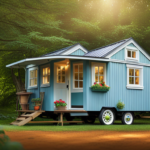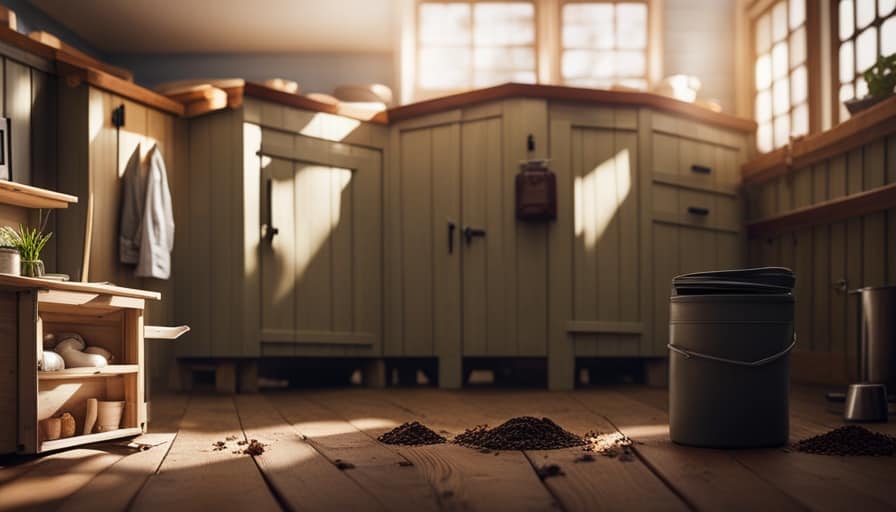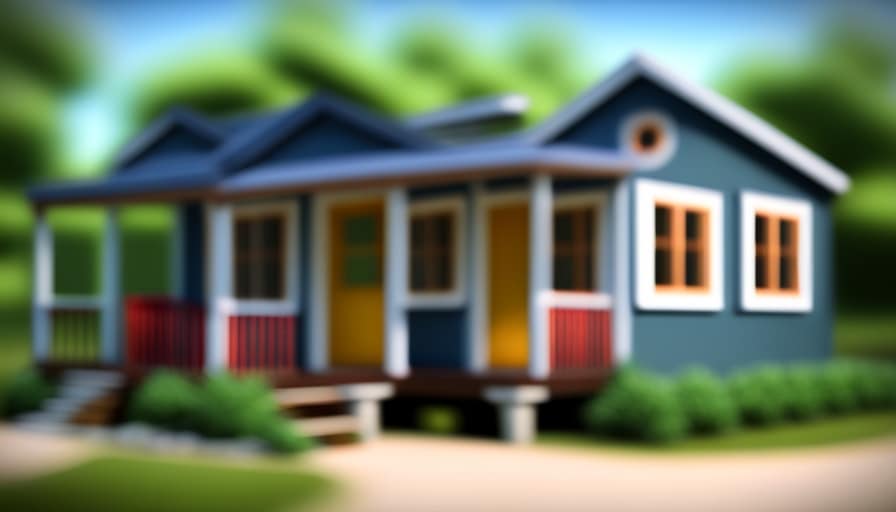Curious about the details of tiny houses? Look no more! We have compiled the top 10 most commonly asked questions about these adorable homes.
From the cost to the legalities, the benefits to the design choices, we’ll unravel the mystery surrounding tiny houses.
So grab a cup of coffee and get ready to dive into the fascinating world of compact living!
Key Takeaways
- Tiny houses are compact dwellings designed to maximize space efficiency and minimize environmental impact.
- Building or buying a tiny house can have cost considerations, and financing options may vary.
- Legal considerations and zoning regulations determine where you can park or build a tiny house.
- Tiny houses can be designed to comply with building codes and offer environmental benefits such as the use of sustainable materials and energy efficiency options.
What Is a Tiny House and How Big Is It
We’ve always wondered what exactly constitutes a tiny house and just how big it is. Well, let’s uncover the mystery!
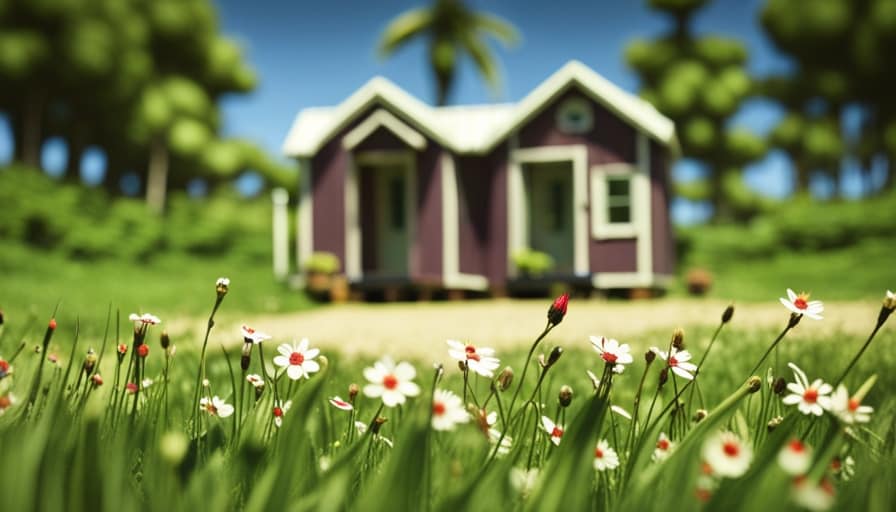
Tiny houses come in various sizes, but typically range between 100 to 400 square feet. These compact dwellings are designed to maximize space efficiency and minimize environmental impact.
Despite their small size, tiny houses offer numerous advantages. First and foremost, downsizing to a tiny house allows for a simpler and more affordable lifestyle. With less space to maintain, homeowners can save money on utilities, maintenance, and overall living expenses.
Furthermore, tiny houses promote sustainability by reducing energy consumption and material waste. Additionally, these cozy homes foster a sense of freedom, encouraging individuals to prioritize experiences and relationships over material possessions.
How Much Does It Cost to Build or Buy a Tiny House
Building or buying a tiny house can be a significant investment, requiring careful consideration of the cost involved. When it comes to the cost of a tiny house, there are two main factors to consider: building it yourself or buying a pre-built one.
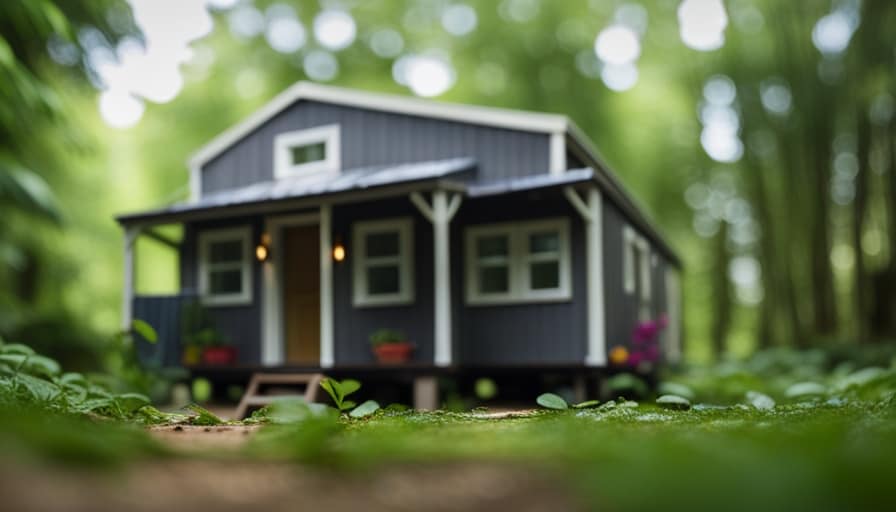
Cost comparison between building and buying can vary greatly. Building your own tiny house can save you money, but it requires time, skills, and resources. On the other hand, buying a pre-built tiny house may come with a higher price tag, but it offers convenience and faster occupancy.
Financing options for tiny houses can also differ. Some people choose to pay cash for their tiny homes, while others opt for loans or financing options. It’s important to research and compare different lenders to find the best rates and terms that fit your budget.
Can You Legally Live in a Tiny House
When it comes to living in a tiny house, there are important legal considerations to keep in mind.
Zoning regulations play a key role in determining where you can park or build your tiny house.

Building codes also come into play to ensure the safety and structural integrity of your tiny home.
Additionally, obtaining the necessary permits for your tiny house is crucial to ensure compliance with local regulations.
Understanding these aspects will help you navigate the legal landscape and enjoy living in your tiny house without any issues.
Zoning Regulations and Tiny Houses
We can navigate through the complexities of zoning regulations to determine if it’s possible to legally live in a tiny house. Zoning regulations vary from place to place, so it’s important to research the specific guidelines in your area.

Here are three key points to consider when it comes to zoning regulations and tiny houses:
-
Local laws: Check with your local government to understand the specific regulations that apply to tiny houses. Some areas have restrictions on minimum square footage, foundation type, and even the location of the tiny house within a property.
-
Tiny house communities: Joining a tiny house community can be a great option for navigating zoning regulations. These communities are often established with the necessary permits and infrastructure to accommodate tiny houses.
-
The tiny house movement: The growing popularity of tiny houses has led to changes in zoning regulations in some areas. Stay informed about any new developments or changes that may make it easier to legally live in a tiny house.
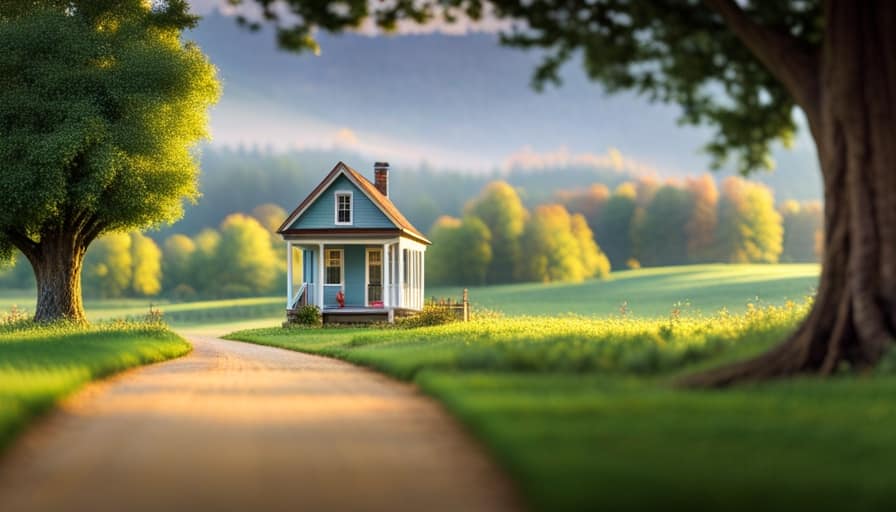
Building Codes and Tiny Houses
Fortunately, we can frequently find ways to comply with building codes and legally live in a tiny house. Building codes are regulations that ensure the safety and well-being of occupants in a structure.
While some building codes may pose challenges for tiny house dwellers, it’s possible to meet these requirements with careful planning and design. One challenge is the minimum square footage requirement, which varies depending on the jurisdiction. However, there are creative solutions such as utilizing loft spaces or adding on to the main structure to meet the minimum size requirement.
Another challenge is the need for a permanent foundation, as many building codes require it. To address this, tiny house owners can explore options like building on a trailer with a removable foundation or finding alternative ways to meet the foundation requirement.
Permits for Tiny Houses?
One of the most common questions people have about tiny houses is, ‘Can we legally live in a tiny house without the necessary permits?’ The answer to this question varies depending on the location and local regulations. In many areas, permits for tiny houses are required just like any other dwelling.
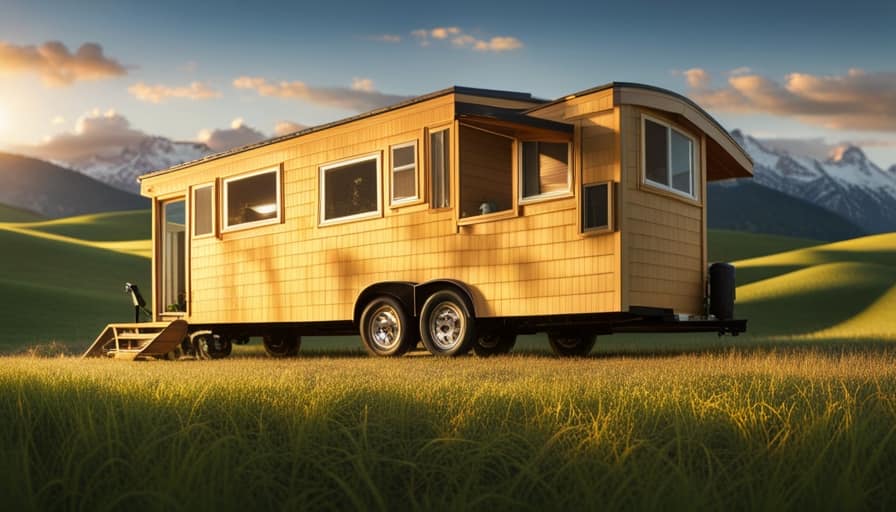
Here are some challenges that individuals may face when obtaining permits for tiny houses:
-
Zoning Restrictions: Many areas have specific zoning regulations that dictate where and how tiny houses can be placed. It’s important to research and understand these restrictions before starting the process.
-
Minimum Size Requirements: Some jurisdictions have minimum size requirements for permanent dwellings, which can make it difficult to obtain permits for tiny houses that don’t meet these standards.
-
Access to Utilities: Ensuring access to water, electricity, and sewage systems can be a challenge for tiny house dwellers, as some areas may have specific requirements or limitations.

Navigating the permit process for tiny houses can be complex, but with proper research and planning, it’s possible to legally live in a tiny house.
What Are the Benefits of Living in a Tiny House
The benefits of living in a tiny house include reduced expenses, simplified living, and a smaller environmental footprint. Embracing minimalism allows for financial freedom and the opportunity to live a more intentional and fulfilling life.
With a smaller living space, expenses such as mortgage payments, utilities, and maintenance costs are significantly reduced. This frees up resources to invest in experiences, travel, or savings.
Additionally, living in a tiny house promotes a simplified lifestyle, where clutter is minimized and possessions are carefully curated. This not only reduces stress but also allows for more time and energy to be dedicated to activities and relationships that truly matter.
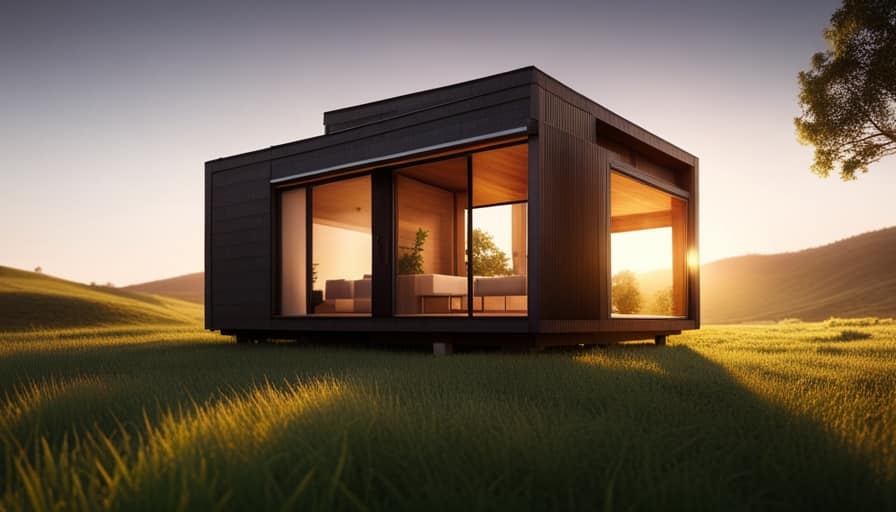
Furthermore, tiny houses have a smaller environmental footprint, consuming fewer resources and producing less waste compared to traditional homes. By choosing to live in a tiny house, individuals contribute to a more sustainable and eco-friendly lifestyle.
How Do You Find Land to Park a Tiny House on
Finding land to park our tiny house on can be a challenging task, but with some research and perseverance, we can locate the perfect spot. Here are three key considerations when finding land for a tiny house:
-
Zoning and Regulations: Before parking our tiny house, it’s important to check local zoning laws and regulations. Some areas have specific requirements for the size, placement, and use of tiny houses. We should ensure that our chosen land is zoned for residential use and allows for tiny houses.
-
Land Ownership: We can explore various options for land ownership, such as purchasing a piece of land, leasing land, or even joining a tiny house community. Each option has its own benefits and legal considerations, so it’s important to thoroughly research and understand the implications.

-
Networking and Online Platforms: Connecting with other tiny house enthusiasts and utilizing online platforms dedicated to tiny house parking can be invaluable. These platforms provide a space for people to share information about available land, lease agreements, and local regulations, making it easier to find suitable land for our tiny house.
What Are the Challenges of Living in a Tiny House
Living in a tiny house can sometimes be challenging, but we often find creative solutions to make the most of our limited space.
One of the biggest challenges of living in a tiny house is downsizing. It can be difficult to let go of belongings that hold sentimental value or that we simply can’t imagine living without. However, downsizing is a necessary step in adapting to tiny house living.
Another challenge is finding storage solutions that maximize the use of every inch of space. We’ve to be strategic in organizing our belongings and utilize multi-functional furniture to make the most of our limited square footage.
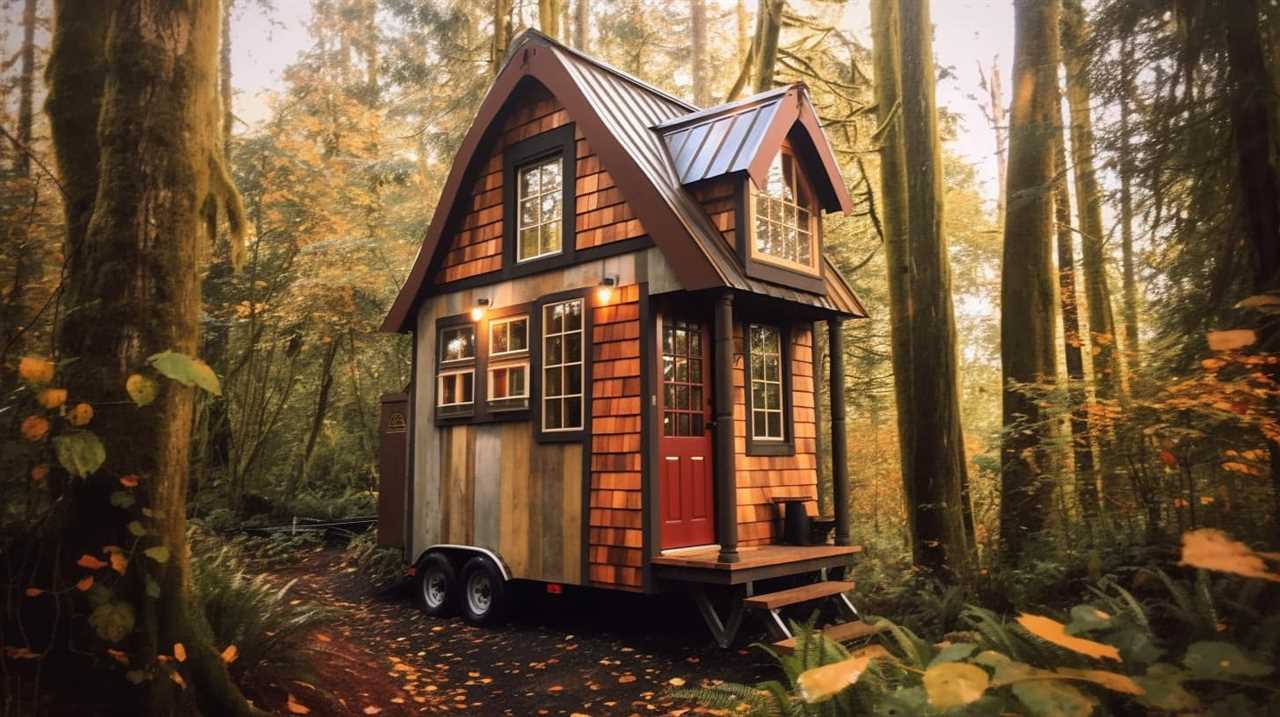
Despite these challenges, living in a tiny house offers a unique and rewarding lifestyle that encourages simplicity and resourcefulness.
Transitioning to the next section, once we’ve overcome the challenges of downsizing and storage, the next step is to choose the right design and layout for our tiny house.
How Do You Choose the Right Design and Layout for a Tiny House
When it comes to choosing the right design and layout for our tiny house, we carefully consider our personal needs and preferences, ensuring that every square inch is utilized efficiently. To achieve this, we employ space optimization techniques and incorporate multi-purpose furniture.
Here are three important factors to consider when selecting the design and layout for a tiny house:
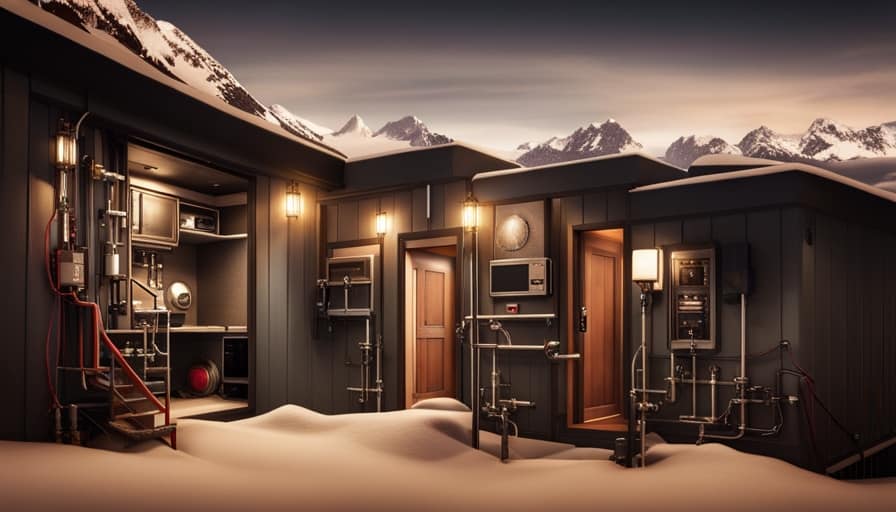
-
Functionality: We prioritize functionality by creating a layout that maximizes the usability of each area. This involves carefully planning the flow of the space and ensuring that every corner serves a purpose.
-
Storage Solutions: It’s crucial to incorporate clever storage solutions into the design. Utilizing vertical space, hidden compartments, and built-in shelving can help maximize storage capacity and keep the tiny house organized.
-
Flexibility: A tiny house requires adaptable spaces. By incorporating multi-purpose furniture such as folding tables, convertible sofas, and wall-mounted desks, we can easily transform one area into another, allowing for more flexibility and efficient use of space.
Are Tiny Houses Environmentally Friendly
When it comes to the environmental impact of tiny houses, there are several factors to consider.

One important aspect is the use of sustainable building materials, which can minimize the depletion of natural resources.
Additionally, energy efficiency options like solar panels and composting toilets can help reduce energy consumption and waste.
Lastly, the smaller size of tiny houses generally means a smaller carbon footprint, as they require fewer resources to build and maintain compared to traditional homes.
Sustainable Building Materials
We can confidently say that tiny houses are indeed environmentally friendly because they utilize sustainable building materials. Here are three reasons why tiny houses are a great example of green construction:
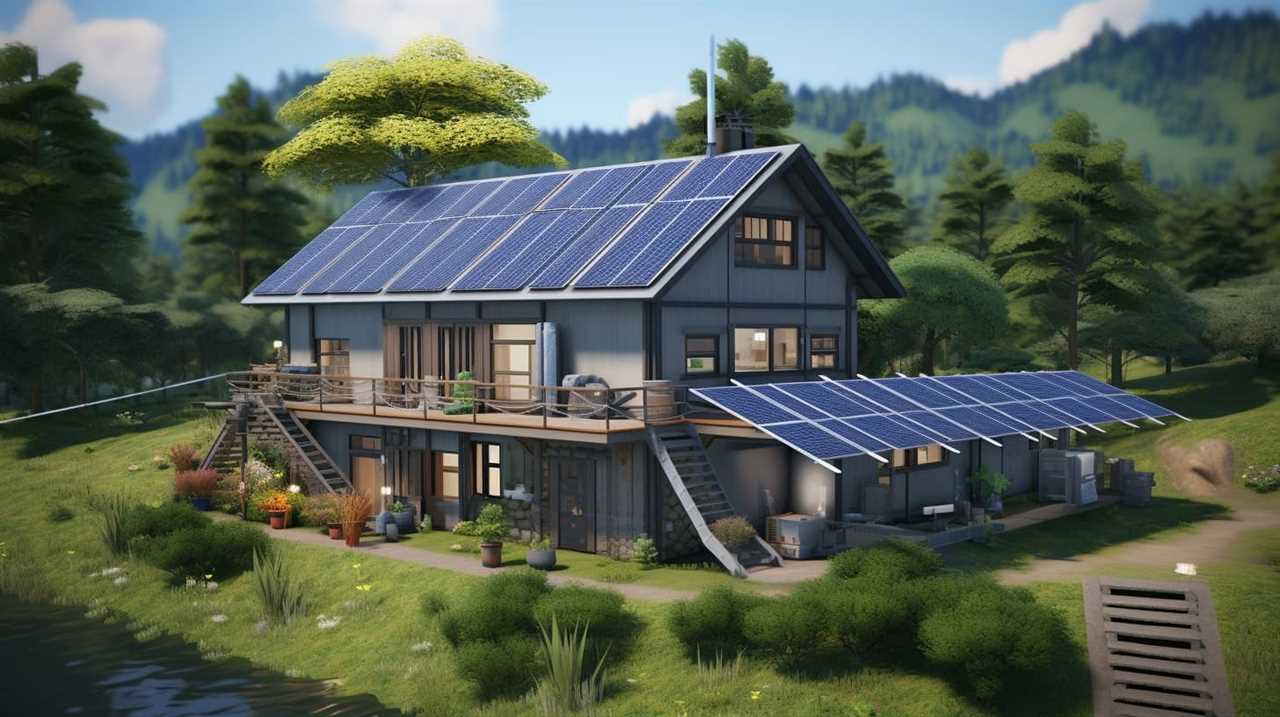
-
Use of alternative materials: Tiny houses often incorporate materials that have a smaller environmental footprint. For example, reclaimed wood, bamboo, and recycled materials are commonly used in the construction of tiny houses. These materials reduce the need for new resources and help to minimize the impact on the environment.
-
Energy efficiency: Tiny houses are designed to be energy-efficient, using less energy for heating, cooling, and lighting. They often incorporate energy-saving features such as high-quality insulation, LED lighting, and energy-efficient appliances. This not only reduces the environmental impact but also helps to lower utility bills.
-
Minimal waste: Tiny houses promote minimalism and simplicity, which means less waste is generated during construction and maintenance. With smaller spaces, there’s less need for excess materials, resulting in less waste going to landfills.
Energy Efficiency Options
And, based on our research, tiny houses offer a variety of energy efficiency options that make them an environmentally friendly choice. These options include the use of energy-saving appliances and solar power options. By incorporating these features, tiny house owners can significantly reduce their carbon footprint and decrease their energy consumption.

Energy-saving appliances are designed to use less energy while still providing the same level of functionality. From energy-efficient refrigerators to low-flow water fixtures, these appliances help conserve resources and lower energy bills. Additionally, solar power options allow tiny house owners to harness the energy of the sun and power their homes in a sustainable way. Solar panels can be installed on the roof or in the surrounding area to generate clean, renewable energy.
By utilizing energy-saving appliances and solar power options, tiny houses contribute to a more sustainable future and offer a greener alternative to traditional housing.
| Energy-Saving Appliances | Solar Power Options |
|---|---|
| Energy-efficient refrigerators | Rooftop solar panels |
| Low-flow water fixtures | Solar batteries for energy storage |
| LED lighting | Portable solar panels for off-grid living |
Impact on Carbon Footprint?
Tiny houses can significantly reduce our carbon footprint and contribute to a more sustainable environment. Here’s how:
-
Energy Efficiency: Tiny houses are designed to be highly energy efficient. With their smaller size, they require less energy for heating and cooling. Additionally, many tiny houses incorporate energy-saving features such as solar panels, LED lighting, and energy-efficient appliances.
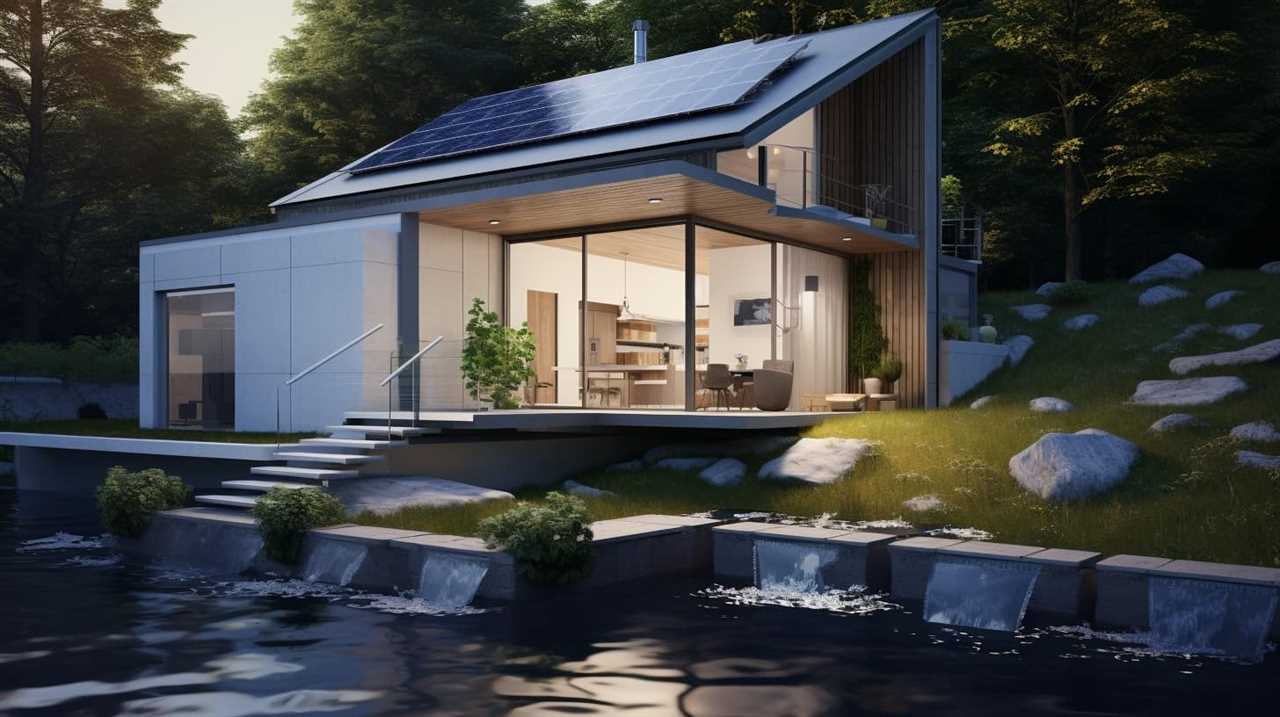
-
Reduced Material Consumption: Building a tiny house requires fewer materials compared to traditional houses. This means less extraction of natural resources and reduced carbon emissions associated with manufacturing and transportation of materials.
-
Minimalist Lifestyle: Living in a tiny house often encourages a minimalist lifestyle. This means consuming less and being mindful of our environmental impact. By reducing our consumption of resources, we can lower our carbon footprint and promote environmental sustainability.
Can You Have Pets in a Tiny House
Our furry friends’ presence can be a delightful addition to our tiny house living experience. Having pets in tiny houses is definitely possible, but it does come with its own set of challenges. One of the main challenges is the limited space available for our pets to move around and play. It’s important to ensure that they’ve enough room to stretch their legs and engage in physical activities.
Additionally, the lack of outdoor space might require us to be more creative in finding ways to provide our pets with exercise and mental stimulation. We can consider taking them for regular walks, using indoor toys and games, or even creating a small outdoor area if possible. Despite the challenges, with proper planning and care, pets can thrive in a tiny house environment.
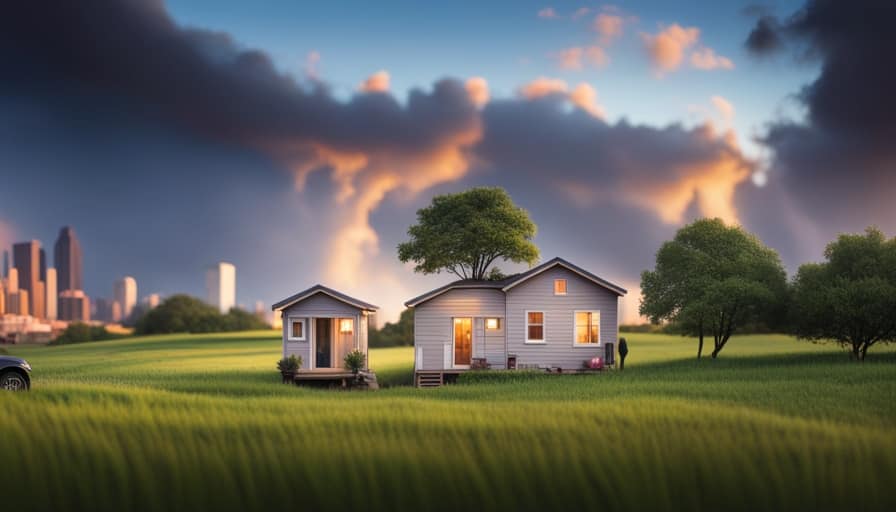
Speaking of families, are tiny houses suitable for families with children?
Are Tiny Houses Suitable for Families With Children?
Having children and living in a tiny house can present unique challenges, but it’s possible to make it work with careful planning and consideration. Here are some important things to consider when deciding if a tiny house is suitable for your family:
-
Tiny house safety precautions: It’s crucial to prioritize the safety of your children in a small space. Install safety gates at the top and bottom of stairs, secure heavy furniture to the wall, and use childproof locks on cabinets and drawers.
-
Limited space: One of the biggest challenges of raising children in a tiny house is the limited space. It’s important to be mindful of storage solutions and to declutter regularly to maximize the available space.
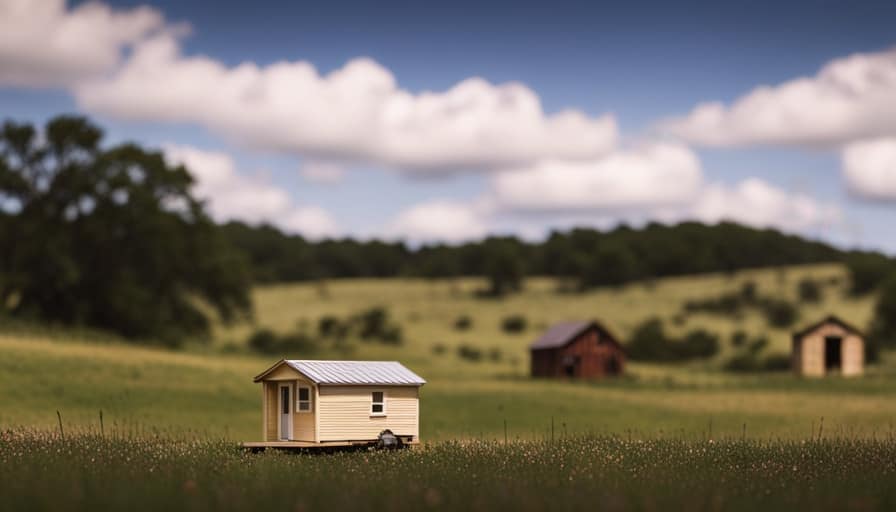
-
Pros and cons of raising kids in a tiny house: On the positive side, living in a tiny house can promote a strong sense of family unity and encourage children to develop a close bond with their siblings. However, it’s important to consider the lack of personal space and potential difficulties in finding suitable play areas for children.
Frequently Asked Questions
Can I Build a Tiny House on My Own?
Yes, we can build a tiny house on our own. However, it is important to check local building permits and regulations. Using appropriate construction materials and techniques is crucial to ensure a safe and sturdy structure.
Are Tiny Houses Eligible for Mortgage Loans?
Yes, tiny houses are eligible for mortgage loans. There are various loan options for tiny houses, including traditional mortgages, personal loans, and RV loans. It’s important to research and compare rates to find the best financing option for your tiny house.
What Are the Zoning Regulations for Parking a Tiny House?
Parking regulations for tiny houses vary depending on the location and zoning regulations. Some areas may allow parking on private property, while others may require tiny house communities or designated areas for parking.
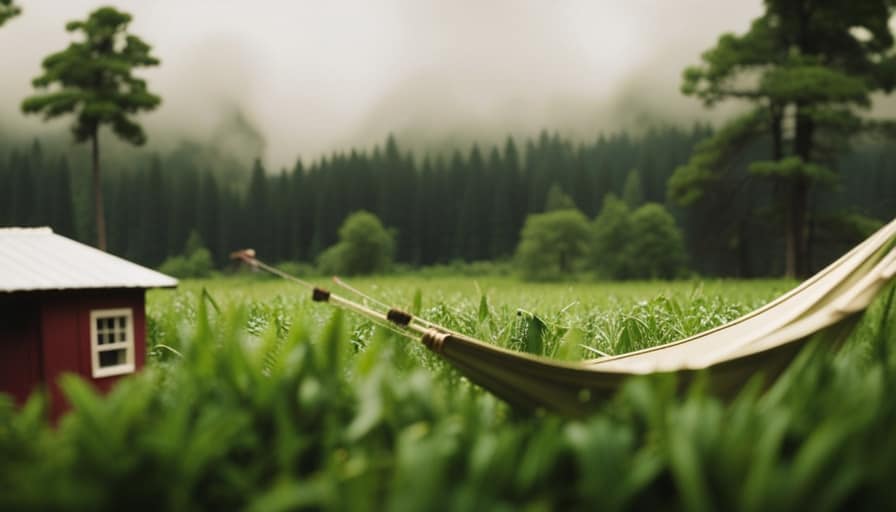
Can I Connect a Tiny House to Public Utilities?
Yes, you can connect a tiny house to public utilities, such as water, electricity, and sewer. However, there are also off-grid options available for those who prefer to be self-sufficient.
Are There Any Restrictions on Moving a Tiny House to a Different Location?
There might be some moving restrictions and legal requirements when it comes to relocating a tiny house. It’s important to research and comply with local regulations to ensure a smooth transition.
Conclusion
In conclusion, the world of tiny houses is full of fascinating details and practical information. With their compact size and affordable cost, these homes offer a unique lifestyle that’s both environmentally friendly and suitable for families.
Whether you’re curious about the legal aspects, the benefits, or the design options, there’s a wealth of knowledge to explore. So, don’t be afraid to dive into the world of tiny houses and unravel the mystery for yourself.
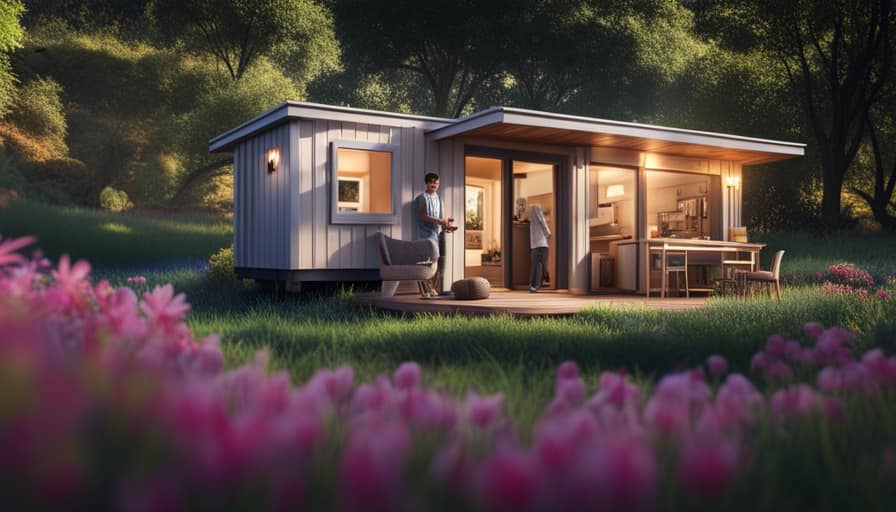
It’s a small world with big possibilities!
I’m Theodore, and I love tiny houses. In fact, I’m the author of Tiny House 43, a book about tiny houses that are also tree houses. I think they’re magical places where imaginations can run wild and adventures are just waiting to happen.
While tree houses are often associated with childhood, they can be the perfect adult retreat. They offer a cozy space to relax and unwind, surrounded by nature. And since they’re typically built on stilts or raised platforms, they offer stunning views that traditional homes simply can’t match.
If you’re looking for a unique and romantic getaway, a tree house tiny house might just be the perfect option.






